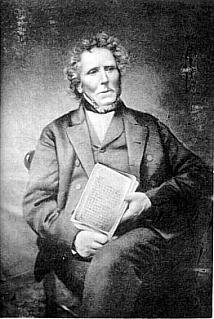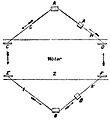James Bowman Lindsay facts for kids
Quick facts for kids
James Bowman Lindsay
|
|
|---|---|
 |
|
| Born | 8 September 1799 Carmyllie, Scotland
|
| Died | 29 June 1862 (aged 62) |
| Resting place | Western Cemetery, Dundee, Scotland |
| Alma mater | University of St. Andrews |
| Known for | Pioneer of Incandescent lighting and telegraphy |
| Scientific career | |
| Institutions | Watt Institute Dundee, Scotland |
| Signature | |
Imagine a world without electric lights or instant messages! A long time ago, a clever Scottish inventor named James Bowman Lindsay (born September 8, 1799 – died June 29, 1862) helped bring us closer to these amazing technologies. He was a pioneer in developing early ideas for things like incandescent lighting (the kind of light bulbs we use) and telegraphy (sending messages over long distances).
Contents
Who Was James Bowman Lindsay?
James Bowman Lindsay was a brilliant mind from Scotland. He was not only an inventor but also a writer and a teacher. His ideas were far ahead of his time, and he helped lay the groundwork for many technologies we use today.
Early Life and Education
James was born in a small place called Cotton of West Hills, near Arbroath in Angus, Scotland. His father was a farm worker, and his mother was Elizabeth Bowman. As a child, James learned to be a handloom weaver, making cloth by hand.
Even while working, James taught himself many things. His parents saw how smart he was and saved money to send him to St. Andrews University. He started there in 1821. At university, he quickly became known for his skills in mathematics and physics. After studying, he returned to Dundee in 1829. There, he became a science and mathematics lecturer at the Watt Institution.
A Spark of Genius: Electric Light
One of James Lindsay's most exciting ideas was about electric light. In July 1835, he showed off a steady electric lamp at a public meeting in Dundee. People could "read a book at a distance of one and a half feet" using his light! This was a very early step towards the incandescent light bulb we know today.
He was also interested in making factories safer. He wanted to use electric light to illuminate jute mills. These mills often had dangerous fires, and electric lights could have prevented many accidents.
Sending Messages Across Water
James Lindsay also worked on ways to send messages using electricity, which is called telegraphy. He explored how to send messages through water, even without wires!
In 1854, he received a patent for his system of wireless telegraphy through water. He had spent many years experimenting in different places. He even showed how to send currents across small bodies of water. One successful public experiment happened in Portsmouth. He was even recognized for discovering the principles of electric telegraphy as early as, or even before, other famous inventors like Morse or Wheatstone.
Other Amazing Ideas
Lindsay had many other innovative thoughts. When people were trying to lay the first transatlantic cable across the ocean, he suggested using arc welding to join the cables. This method uses electricity to melt and join metal, making strong connections. He also suggested using special metal pieces called sacrificial anodes to stop the cables from rusting in the saltwater. These ideas were very advanced for his time.
He was also very good at other subjects. He was an astronomer, studying stars and planets. In 1858, he published a set of astronomical tables called his 'Chrono-Astrolabe'. These tables helped figure out historical dates. He was also a philologist, meaning he studied languages. He collected many rare books and worked on understanding different languages.
A Quiet Inventor's Legacy
James Lindsay was a kind and thoughtful person. He was very dedicated to his family. For example, he turned down a job offer at the famous British Museum so he could take care of his elderly mother.
He didn't always promote his inventions as much as he could have. However, his vision was powerful. He predicted that cities would be lit by electricity and even foresaw the development of our modern "information society."
In 1858, his important work was recognized. On the recommendation of Prime Minister Lord Derby, Queen Victoria granted James Lindsay a pension of £100 a year. This helped him continue his studies and work.
Remembering James Bowman Lindsay
James Bowman Lindsay passed away on June 29, 1862. He was buried in the Western Cemetery in Dundee.
His Monument
In 1901, many years after his death, people raised money to build a monument for him. It's an obelisk (a tall, four-sided pillar) at his grave. At the very top, there's a bronze hand holding a lightning conductor, which is a fitting symbol for someone who worked so much with electricity.





